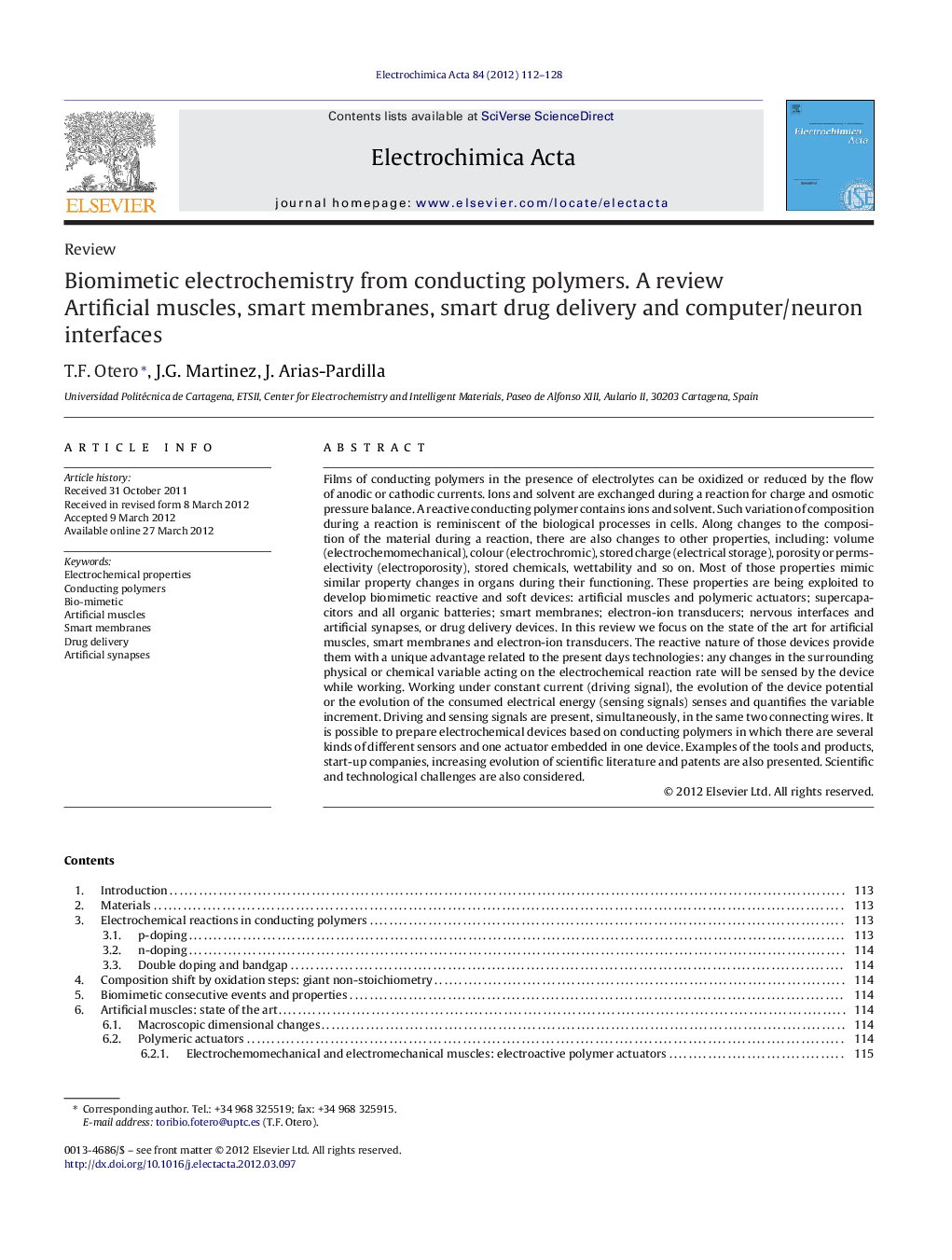| Article ID | Journal | Published Year | Pages | File Type |
|---|---|---|---|---|
| 187938 | Electrochimica Acta | 2012 | 17 Pages |
Films of conducting polymers in the presence of electrolytes can be oxidized or reduced by the flow of anodic or cathodic currents. Ions and solvent are exchanged during a reaction for charge and osmotic pressure balance. A reactive conducting polymer contains ions and solvent. Such variation of composition during a reaction is reminiscent of the biological processes in cells. Along changes to the composition of the material during a reaction, there are also changes to other properties, including: volume (electrochemomechanical), colour (electrochromic), stored charge (electrical storage), porosity or permselectivity (electroporosity), stored chemicals, wettability and so on. Most of those properties mimic similar property changes in organs during their functioning. These properties are being exploited to develop biomimetic reactive and soft devices: artificial muscles and polymeric actuators; supercapacitors and all organic batteries; smart membranes; electron-ion transducers; nervous interfaces and artificial synapses, or drug delivery devices. In this review we focus on the state of the art for artificial muscles, smart membranes and electron-ion transducers. The reactive nature of those devices provide them with a unique advantage related to the present days technologies: any changes in the surrounding physical or chemical variable acting on the electrochemical reaction rate will be sensed by the device while working. Working under constant current (driving signal), the evolution of the device potential or the evolution of the consumed electrical energy (sensing signals) senses and quantifies the variable increment. Driving and sensing signals are present, simultaneously, in the same two connecting wires. It is possible to prepare electrochemical devices based on conducting polymers in which there are several kinds of different sensors and one actuator embedded in one device. Examples of the tools and products, start-up companies, increasing evolution of scientific literature and patents are also presented. Scientific and technological challenges are also considered.
► Composition and properties of conducting polymers change during reactions. ► These properties are being exploited to develop biomimetic reactive and soft devices. ► The state of the art for artificial muscles sensing working conditions was reviewed. ► Smart membranes, drug delivery devices and nervous interfaces were also reviewed.
